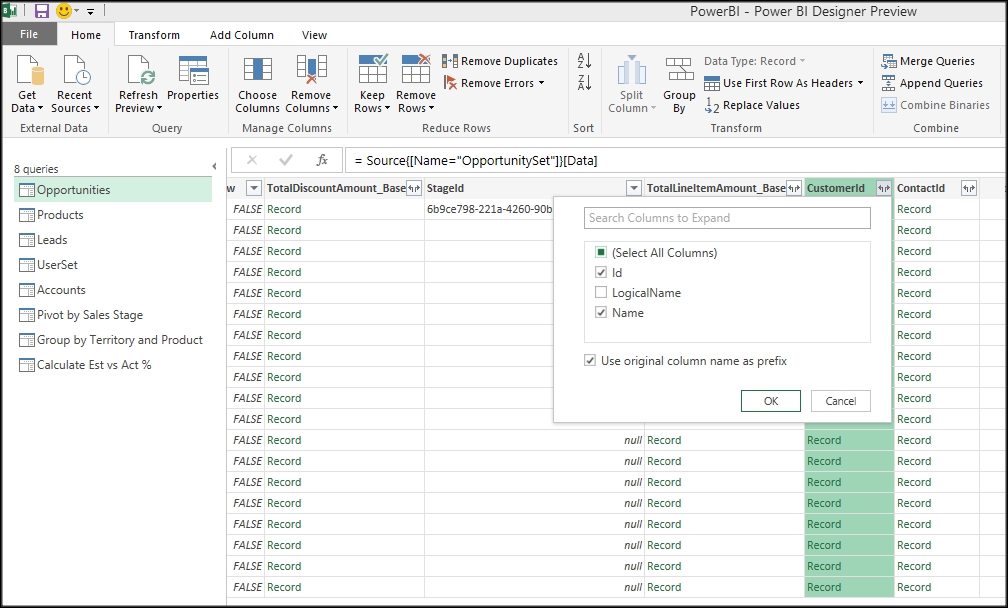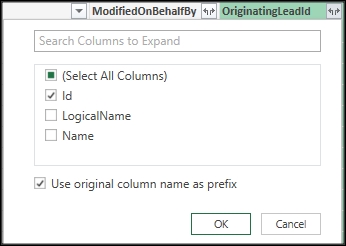Now that you understand the query process and what datasets you need to connect together, let's see how to modify the data. You will need to modify data types in each Dynamic CRM dataset list mentioned before.
We will start with the OpportunitySet; here is how we do it:
In Power Designer, select the OpportunitySet dataset from the left-hand side menu of the Power BI query window:

-
Once in the query view of the OpportunitySet dataset, select and change the column data type for CustomerId to show the name. To do this, click on the icon
 with the CustomerId header name and change the column data type to Id and Name. This will produce two columns for both data types:
Staying in the OpportunitySet dataset, click on the icon
with the CustomerId header name and change the column data type to Id and Name. This will produce two columns for both data types:
Staying in the OpportunitySet dataset, click on the icon
 with the OrginatingLeadID header name and change the column data type to ID. This will show the Dynamics CRM GUID for each Lead record:
For the OwnerID, click on the icon
with the OrginatingLeadID header name and change the column data type to ID. This will show the Dynamics CRM GUID for each Lead record:
For the OwnerID, click on the icon
 with the OwnerID header name and change the column data type to Id and...
with the OwnerID header name and change the column data type to Id and...



